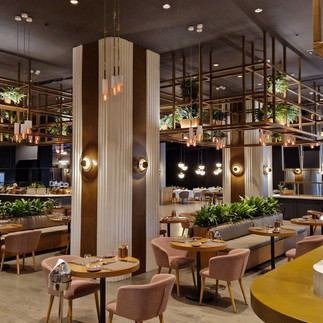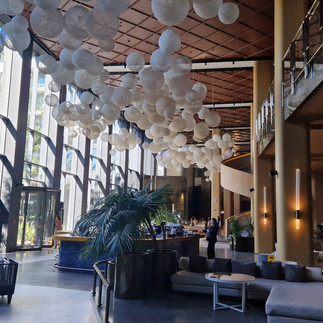How Plants Can Impact Open Spaces
- Ellie Foster
- Apr 19, 2024
- 1 min read
Shared spaces can often feel sterile and impersonal, lacking the warmth and vibrancy that can boost morale and well-being. Here's how adding plants can transform the atmosphere of these spaces:
Aesthetics and Ambiance:
Visual Appeal: Plants bring a touch of nature indoors, adding color, texture, and life to often stark spaces. A well-curated selection of plants can create a more inviting and visually appealing environment.
Softened Atmosphere: Harsh lines and sterile furniture can be softened by the presence of greenery. Plants create a more relaxed and comfortable atmosphere that feels less institutional.
Biophilic Connection: Humans have an innate connection to nature. Adding plants satisfies this need and fosters a sense of calm and well-being in shared spaces.
Improved Well-being and Productivity:
Stress Reduction: Studies suggest that viewing greenery can have a calming effect, reducing stress levels and promoting feelings of relaxation in shared spaces.
Air Quality Boost: Plants act as natural air filters, removing toxins and pollutants commonly found in buildings. This can lead to improved air quality and potentially a healthier and more comfortable environment for everyone.
Enhanced Focus: Research indicates that exposure to plants in shared spaces can improve focus and concentration. This is particularly beneficial in break rooms or collaborative areas where people need to recharge or engage in focused tasks.
By incorporating plants into shared spaces, you can create a more welcoming, healthy, and inspiring environment for everyone. This can lead to improved well-being, productivity, and a stronger sense of community within the shared space.














댓글